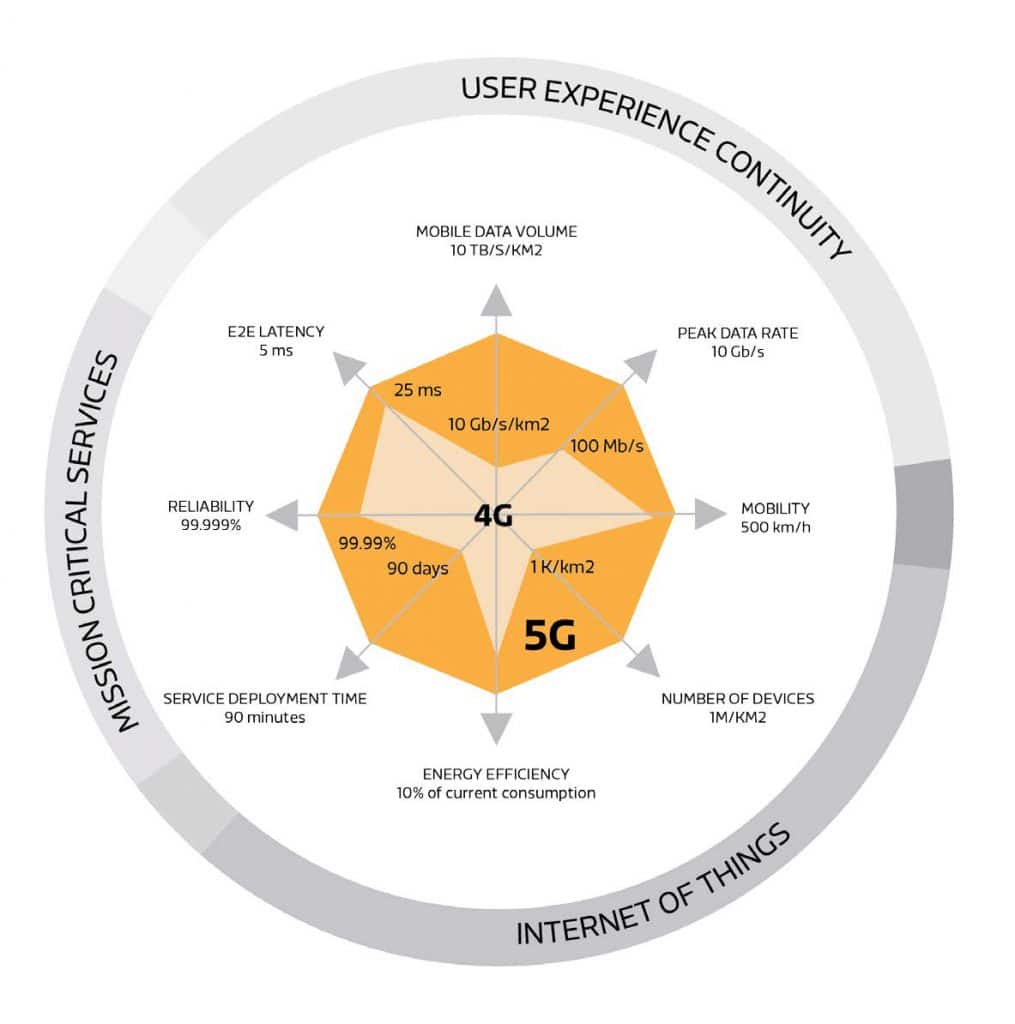
ASOCS is disrupting the industrial network connectivity market with an open and virtualized software solution that delivers 5G private mobile network solutions in a single software stack.
The Dawn of Private Networks
In the beginning, enterprise networks were just that – a weave of wires and cables running through office buildings and campuses. They were necessary for securely and privately interconnecting computers and servers for business purposes. As technology advanced, these costly LAN deployments were partially replaced with Wi-Fi networks to try and “cut the wire”, along with its costs.
Today, the growing number of services that rely on wireline and wireless connectivity is changing the way enterprises plan, deploy, and utilize their networks. That, combined with technological innovations such as IoT devices and AR/VR applications, as well as the growing demand for coverage, speed and reliability for mission-critical device connectivity, is causing many enterprises to consider 5G private networks and explore the new possibilities they offer.
5G Enterprise Private Networks are Coming
5G mobile networks are the natural evolution of 4G/LTE mobile networks. But when it comes to private enterprise networks, they are expected to be the next big thing. Why is that? What is it that makes them so revolutionary? What extra benefits do they bring to the table? And what needs are likely to arise that will require the unique capabilities of 5G?
Before we can answer these questions, it’s worth understanding exactly what 5G is. Without getting too technical, the 5th generation of mobile connectivity (5G) is actually a combination of three communications technologies: eMBB (enhanced Mobile BroadBand), URLLC (Ultra Reliable Low Latency Communications) and mMTC (massive Machine Type Communications). Each offers new and unique capabilities and advantages over other wireless connectivity solutions.
These unique capabilities enable new use cases as depicted in the diagram below. In the following sections, we will elaborate on how specific 5G benefits translate into new business opportunities, especially in private networks.
5G and 4G and related use cases

Source: https://cdn-www.mediatek.com/page/MediaTek-5G-NR-Summary.pdf)
Benefit #1: Reliability
Cellular communications are intended to be guaranteed by nature. With the ability to deploy a private mobile network on newly available spectrum ranges, enterprises today can provide a much more reliable means of connectivity. Cellular communication are also synchronized between access points, ensuring existing connections don’t disconnect when a device moves from one access point to another. Mission-critical applications that require constant reliable connectivity, like security communications and alarm systems, demand highly dependable solutions. 5G provides just that.
Benefits #2: Latency
One of the key issues for enterprise applications islatency – the delay in the time it takes data to reach its target destination. Latency can make a significant difference when it comes to applications that need near-real-time connectivity (for example, augmented or virtual reality). The latency one can expect today from 4G networks is around 50ms-70ms (0.05 seconds). With 5G, it is reduced to 2ms-5ms and a theoretical target latency of 1ms with advances made in both Radio Access Network (RAN) and Core components.
With so many applications and enterprise data stored in the cloud, bandwidth and latency matter more than ever. The advantages of private 5G enterprise networks also open up new possibilities for latency-sensitive applications. Sensors in machines on the production floor, bandwidth-demanding uses like AI/AR, and those combining the two in fields like telemedicine and public safety, are some of the most common examples.
Benefit #3: Device Density
These Industrial IoT and AI/AR-based services also imply an increased number of devices per square meter, making private 5G networks almost mandatory in the era of IoT in the office, in the warehouse, and on the factory floor. 5G networks can support 1 million devices for every square kilometer, making them perfect for heavily connected wireless environments.
This is the main reason that the manufacturing industry is particularly eager to adopt private 5G networks. 5G is seen by many in the manufacturing industry as a necessary driver for Industry 4.0 and the automation of manufacturing processes. Currently, connecting machines and devices on the factory floor requires specialized wireless equipment that still fails to provide the reliability and security levels needed for such mission-critical applications. With the overall goal of Industry 4.0 being to reduce manufacturing costs through the implementation of automation technologies driven by data, private 5G networks will undoubtedly impact the rate of IIoT adoption in manufacturing and beyond.
Benefit # 4 Speed of Implementation
Deployment of 4G/LTE private enterprise networks today is not only tricky because of the shortage in publically available ranges upon which to transmit, but also because deploying it can take months and get quite costly. With 5G, service deployment time can be significantly shortened to a matter of days or hours. And since time is money, that’s a lot of money saved.
5G also heralds a new era of virtualization. Virtualization offers not only speed of deployment but also the notion of elastics scalability, where network capacity can be increased or reduced based on actual needs. NFV – with its central orchestration, remote configuration and management – also introduces the ability to easily implement new services and new business models. Another aspect is the use of standard equipment – COTS servers, Ethernet cables, etc. Deployment becomes an IT task, just as with Wi-Fi.
Benefit #5: Security
The security and integrity of business data traversing within your private network is a top priority.
With 5G, companies will be able to deploy and manage their own cellular networks without depending on third-party providers to properly implement security and QoS policies across private company networks. Furthermore, 5G technology in itself provides new security measures, namely: resilience; communication security; identity management; privacy; and security assurance.
Benefit #6: Network Slicing
Enterprise 5G networks will offer a unique and powerful new capability: network slicing. 5G network slicing essentially allows network operations to create multiple functionality-specific virtual private networks on the same network infrastructure. Being able to configure each slice as an independent network can ensure SLAs for mission-critical application connectivity and effective utilization of bandwidth resources. So, for example, the traffic coming from a patient’s monitor will be on a different (and higher priority) network slice than the one serving visitors on a hospital campus.
The Bottom Line: 5G Private Networks – Driving a Business Revolution
Enterprises have always been on the cutting edge of technology and the first adopters of innovation. 5G is no different.
But while the value of recent network generations such as 4G seemed to be focused around richer media experiences that primarily benefited consumers, 5G Private Networks have the potential to truly revolutionize business. You can learn more about our very own solution for 5G private networks here.




